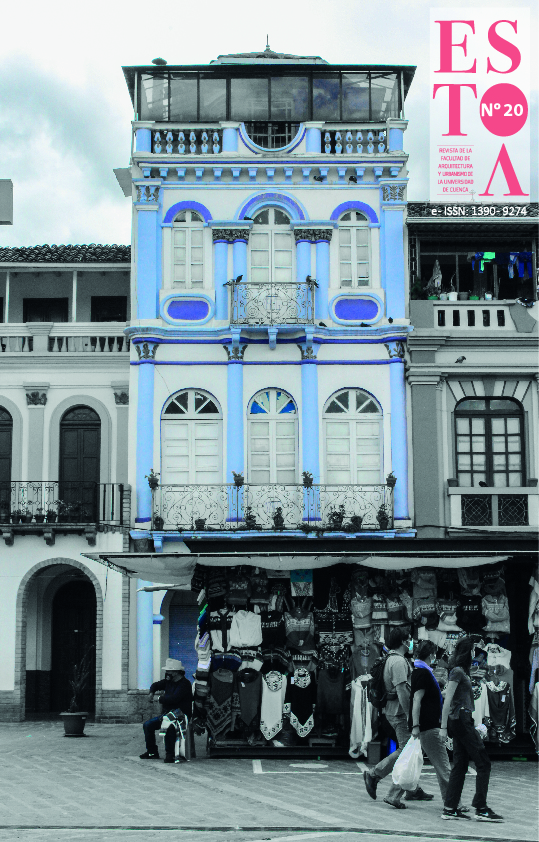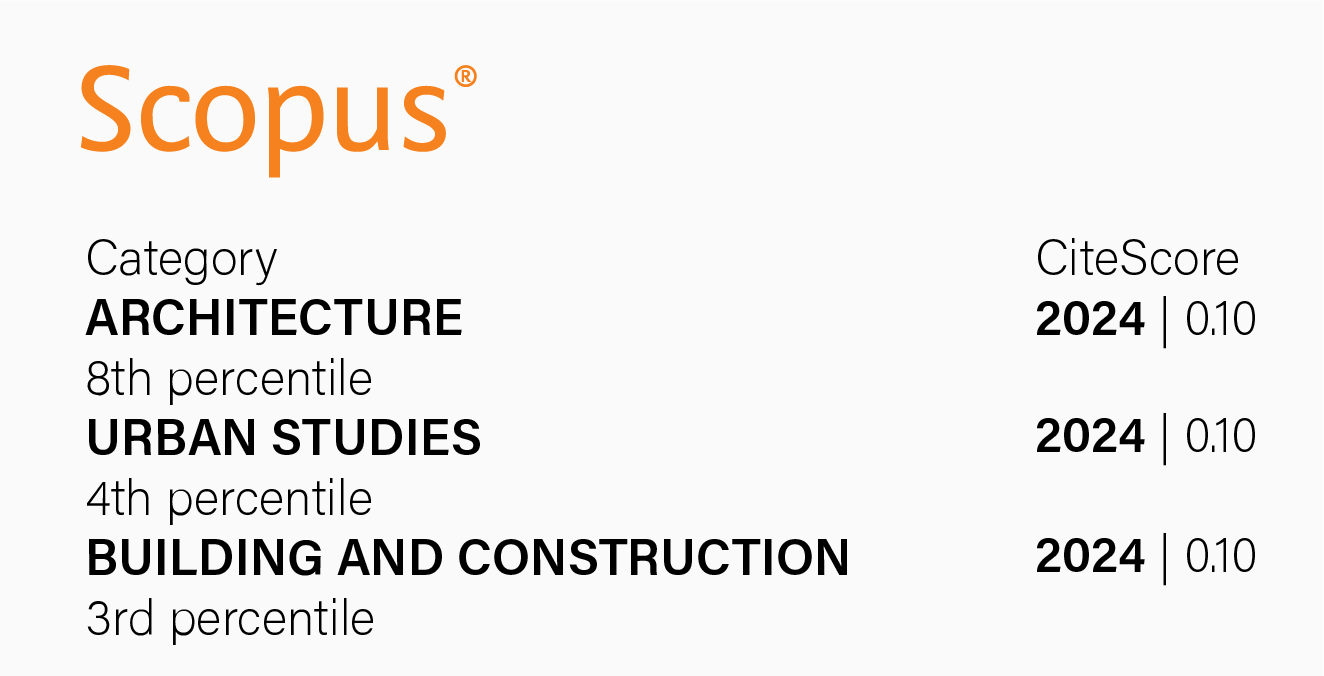Impact of the urban soundscape from the subjective register of the users. Methodological-instrumental approach
DOI:
https://doi.org/10.18537/est.v010.n020.a12Keywords:
soundscape, study methodology, subjective assessment, urban space, TucumánAbstract
An analysis is developed which integrates the objective approach to acoustics with the subjective approach to the concept of soundscape. Through a quantitativequalitative methodology, the sound itself is analyzed, as well as the evaluation of the subjects who perceive it, located in a certain environmental, social and cultural context. The chosen object of study is the Plaza Urquiza in Tucumán, Argentina, of historical heritage value, where leisure activities are traditionally developed. The methodology involves the study of the physical conditions, sound pressure levels, location and temporal structure of sound sources. Then, in order to know the perception and the evaluation of the soundscape, he proposes to carry out interviews and surveys whose data are processed by descriptive statistics and the constant comparison method. The research develops a feasible methodology to be applied for the study of the soundscape and allows the conception of design recommendations to improve the acoustic quality of this public space and others like it.
Downloads
References
Aletta, F., Oberman, T., Mitchell, A., Erfanian, M., Lionello M., Kachlicka M. y Kang J. (2019). Associations between soundscape experience and self-reported wellbeing in open public urban spaces: a field study. The Lancet, 394. https://doi.org/10.1016/S0140-6736(19)32814-4
Botteldooren, D., De Coensel, B. y De Muer, T. (2006). The temporal structure of urban soundscapes. Journal of sound and vibration, 292(1), 105-123. https://doi. org/10.1016/j.jsv.2005.07.026
Charmaz K. (2006). Constructing Grounded Theory. A Practical Guide Through Qualitative Analysis. SAGE.
Di Lullo, R. y Giobellina, B. (1996). La otra ciudad. Tucumán frente al 2000. FAU UNT.
Flick, U. (2007). Introducción a la investigación cualitativa. Ediciones Morata.
García, A. I. (2010). Contaminación acústica en la materia de música. Innovación y experiencias educativas, 27, 1-9.
Germán González, M. y Santillán, A. O. (2006). Del concepto de ruido urbano al de paisaje sonoro. Bitácora.
Glaser B. y Strauss, A. (1967). The Discovery of Grounded Theory: Strategies for Qualitative Research. Aldine.
Glaser, B. (1992). Basics of Grounded Theory Analysis. California, Sociology Press.
Grijalba Obando, J. A. y Paül Carril, V. (2018). La influencia del paisaje sonoro en la calidad del entorno urbano. Un estudio en la ciudad de Popayán (Colombia). Urbano, 21(38), 70-83. https://doi.org/10.22320/07183607.201 8.21.38.06
Hatfield, J., Van Kamp, I, y Job, R. F. S. (2006). Clarifying “soundscape”: Effects of question format on reaction to noise from combined sources. Acta Acustica United with Acustica, 92(6), 922–928.
Hernández Sampieri, R. y Mendoza, C. (2018). Metodología de la investigación. Las rutas cuantitativa, cualitativa y mixta. Mc Graw Hill.
López Barrio, I. (2001). El significado del medio ambiente sonoro en el entorno urbano. Estudios geográficos, 62 (244), 447–466. https://doi.org/10.3989/egeogr.2001. i244.277
Maristany, A. R. (2016). Paisaje Sonoro Urbano “Soundwalk” como método de análisis integral. Revista Pensum, 2, 41-56.
Matthew, B., Miles, A., Huberman, M. y Saldaña, J. (2019). Qualitative Data Analysis: A Methods Sourcebook. SAGE Publications.
Paterlini, O. (2010). La centralidad urbana histórica en San Miguel de Tucumán: entre la conservación y la innovación. En M. Gutman (Ed.), Argentina: persistencia y diversificación, contrastes e imaginarios en las centralidades urbanas, (pp. 55-96). OLACCHI.
Schaeffer, P. (2003). Tratado de los objetos musicales. Alianza Editorial.
Schafer, R. M. (1977). The Tuning of the World (The Soundscape). Arcana Editions.
Schafer, R. M. (1976). El mundo del sonido. Los sonidos del mundo. Publicación Mensual de la UNESCO. El Correo. XXIX. Place de Fontenoy.
Strauss, A. y Corbin, J. (1990). 1st Edition. Basics of Qualitative Research- Techniques and Procedures for Developing Grounded Theory. Sage.
Truax, B. (1984). Acoustic Communication. Simon Fraser University.
Truax, B. (1999). Handbook of Acoustic Ecology. (CDROM). Cambridge Street.
Zapata Cardona, G. A. y Cardona Restrepo, J. D. (2020). Relaciones entre el paisaje sonoro y la educación patrimonial: hacia el desarrollo de la inteligencia territorial. Trilogía Ciencia Tecnología Sociedad, 12(22), 217-244. https://doi.org/10.22430/21457778.1559
Zhang, X., Ba, M., Kang, J., y Meng, Q. (2018). Effect of Soundscape Dimensions on Acoustic Comfort in Urban Open Public Spaces. Applied Acoustics, 133, 73-81. https://doi.org/10.1016/j.apacoust.2017.11.024
Published
How to Cite
Issue
Section
License
Copyright (c) 2021 Estoa. Revista de la Facultad de Arquitectura y Urbanismo

This work is licensed under a Creative Commons Attribution-NonCommercial-ShareAlike 4.0 International License.
The Journal declines any responsibility for possible conflicts derived from the authorship of the works that are published in it.
The University of Cuenca in Ecuador conserves the patrimonial rights (copyright) of the published works and will favor the reuse of the same ones, these can be: copy, use, diffuse, transmit and expose publicly.
Unless otherwise indicated, all contents of the electronic edition are distributed under a Creative Commons Attribution-NonCommercial-ShareAlike 4.0 International License.




